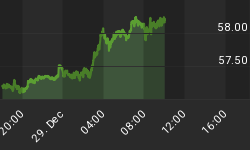Even though I have not posted commentary in the last few months, I have been keenly aware of the wild ride that has occurred in the commodity markets over the last couple of months. The major sell-offs, that have occurred in nearly every sector, have left many commodity bulls around the world asking the following question: Is this bull market in commodities finally over?
To be fair, there is some validity to this question. If one was to exclusively look at the losses they have suffered in their portfolios or even charts of these markets in the last few months, the outlook has looked pretty grim. Nonetheless, investors have had a choice to either stay focused on fundamentals or simply exit right alongside the herd.
Before you decide to exit.....consider the following historical example.
"During the first stage of the 1970s gold bull market, the price of gold moved up from $40/ounce to $199/ounce. The move up, however, did not happen overnight. It took about a couple of years for the price of gold to finally close at just below the $200/ounce level. In 1975 the price of gold then sold off sharply, falling to just below $110/ounce. While this decline was substantial, especially in the moment, it ultimately just represented a correction in a substantial multiyear bull market. In the 1970s, generally two types of investors participated in the gold market. The first investors purchased gold solely for speculative reasons. In other words, they had seen the price of gold appreciate from $40/ounce and simply wanted to participate in upcoming profits. Beyond this, there was no basis for their purchase. The second investors, however, purchased gold because they understood the fundamentals that were driving prices higher. For instance, these investors understood that the inflationary pressures would only intensify and that demand for the metal would continue to increase. As a result, they were confident that their long-term investment was supported by fundamental factors.
When gold prices corrected from their high, the first investors panicked and sold their positions. In fact, I am sure that many investors happened to get in right at or near the $199 high; this seems to be typical for investors who chase returns. The second investors, however, had a firm grasp on the fundamental factors that were driving the price of gold. Thus, they held on to their positions. In the end, they were able to profit handsomely from a metal that eventually reached $850/ounce in January 1980.
I bring this example up so that you can have an understanding of the dynamics of this commodity bull market. We are in the midst of a long-term bull market that will likely last for another 10 years, but there will also be moments where the commodity markets will experience some pretty significant sell-offs. Does this mean that you should panic?
No. Does this mean that the bull market is over? No. As long as the fundamentals are still intact, you can expect commodities to continue their bull run. And it is precisely for this reason that you must understand the fundamentals that are driving this commodity bull market."
The above is an excerpt from my new book, Commodities For Every Portfolio: How You Can Profit From The Long Term Commodity Boom (Wiley 2007). If you are interested in learning more about why we are still in the early stages of this commodity bull market and why commodities belong in every portfolio, I encourage you to order my new book here . In addition, if you are interested in finding out more about the book is about, you can read the preface exclusively at www.commoditynewscenter.com.
Lastly, I am also offering a free commodity newsletter filled with market analysis and recommendations-- you can sign up here: Note: I am no longer affiliated with Wisdom Financial. If you signed up for my newsletter in the past, you must sign up again.
















